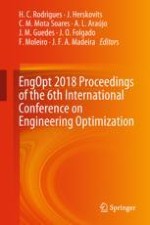2019 | OriginalPaper | Buchkapitel
Cartesian Genetic Programing Applied to Equivalent Electric Circuit Identification
verfasst von : Marco André Abud Kappel, Roberto Pinheiro Domingos, Ivan Napoleão Bastos
Erschienen in: EngOpt 2018 Proceedings of the 6th International Conference on Engineering Optimization
Aktivieren Sie unsere intelligente Suche, um passende Fachinhalte oder Patente zu finden.
Wählen Sie Textabschnitte aus um mit Künstlicher Intelligenz passenden Patente zu finden. powered by
Markieren Sie Textabschnitte, um KI-gestützt weitere passende Inhalte zu finden. powered by
